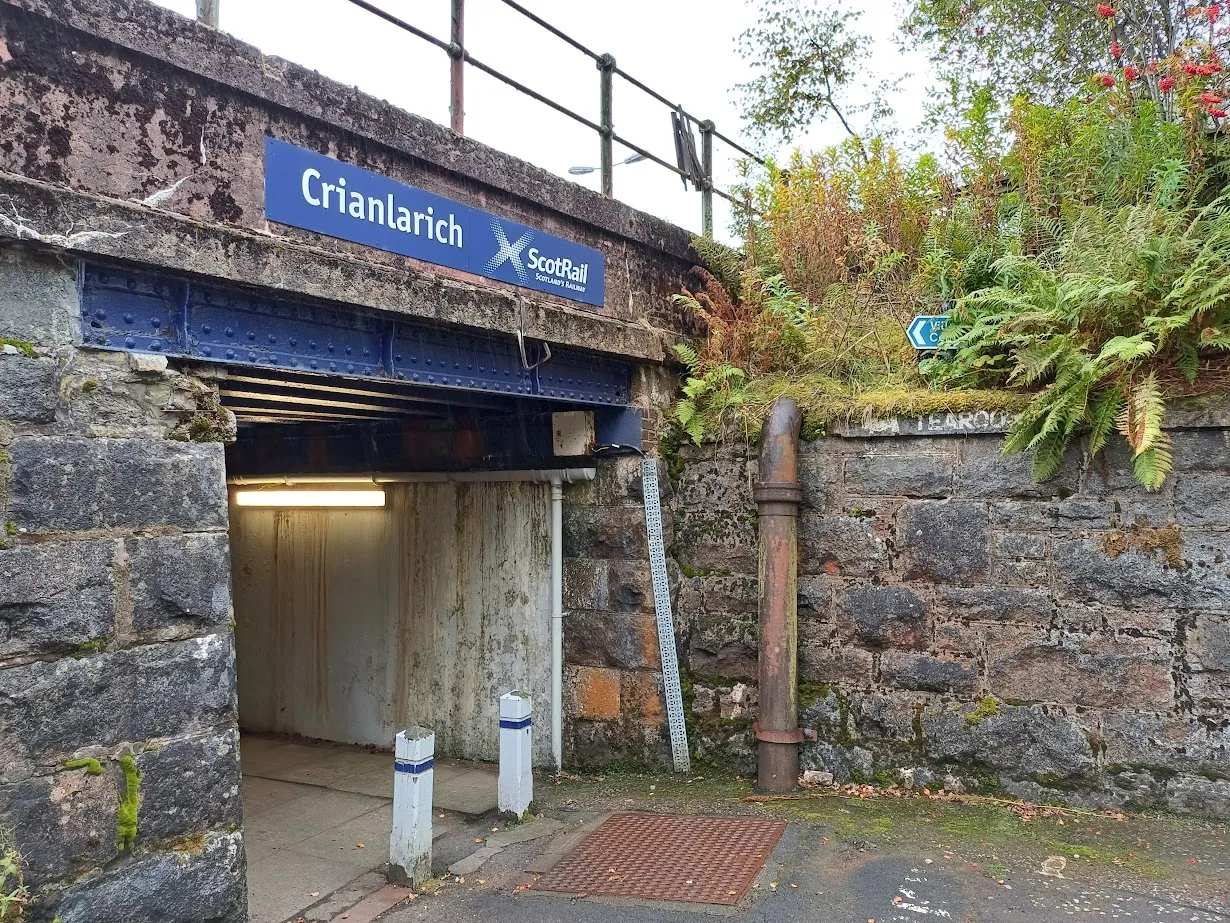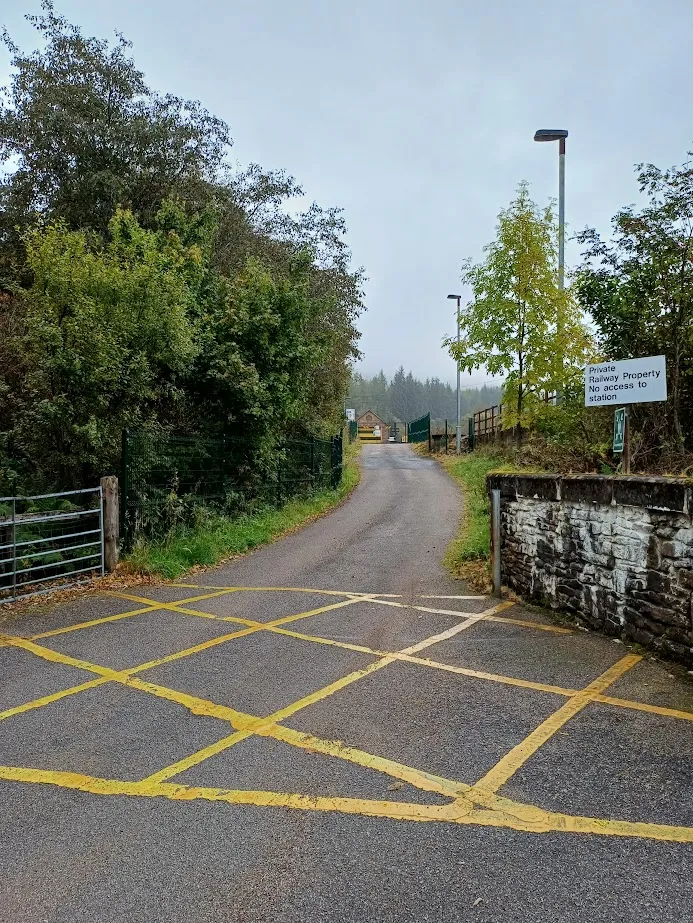
One of my biggest plans when I hit sixty in a couple of years' is to document and create an archive of railway infrastructure particularly in Scotland. I don't know where my fascination for railways and transport in general came from although I know it's often a key symptom of mild autism, but combine that with my love of Scotland and the romanticism of trains wending their way along picturesque railway lines alongside tranquil lochs and rugged moors and for me at least, it creates a perfect storm of peace and serenity.
I know that there are millions of railway photos on line already, some almost exactly the same as the ones I took but so many are hidden behind paywalls, part of private collections and copyright sensitive. Posting my photos here on Hive means they are open for anyone to see or use and will hopefully remain rooted on the blockchain forever.
This post is about a quick visit to Crianlarich railway station, a small village on the edge of the Scottish Highlands with a population of just over two hundred people. What gives it importance in regards to the railway is that it's home to a junction, one of very few North of Glasgow for it is here that, just North of the station, the line splits with the mainline continuing North to Fort William and Mallaig and a spur off to the left that takes you to Oban.
The photos will also hopefully provide some inspiration to the railway modelling community with many lineside paraphenalia on display and detailed pictures of trackwork and buildings that all adds to the realism when creating models.

Look closely into the distance and you can see where the track splits, just after rejoining with the branch on the left as you look at it it going off to Oban and straight ahead to Fort William and Mallaig. Another interesting point to note about this picture is that the house you see on the right of the photo was the station masters house and long before the fence was built, would stand outside to exchange the single track working tokens with outgoing trains. These days, this is done electronically by speaking to a central control on that panel you can see to the left before a green light is given to leave the station.
On the day I visited, we were on our way back from Oban to stay with the wife's sister and her husband in Lochwinnie, just outside Glasgow and with her and my mother sat in the car moaning about stopping to take pictures of an obscure railway station in the rain and refusing to brave the elements themselves, which had suddenly turned decidedly Scottish, I had only limited time to get a few photos. I, however, loved the colours. The grey, sullen sky seems to perfectly match the surroundings and the damp glossy effect of the railway and its surrounding foliage, just beginning to take on its Autumnal hues only enhances the overall scene, in my opinion.
The station opened as part of the grand opening of the West Highland line on August 7th 1894 but wasn't the first station in the village. That honour went to another station, around a mile away which sat on the existing Callander to Oban line which closed due to recommendations in the infamous Beeching Report in 1965. To avoid confusion over the names, the suffixes of 'upper' and 'lower' were added. Tyndrum, just up the line, still has two stations and the naming of them remains a confusing mess right up until this day but that's for a future post.
What makes Crianlarich railway station so interesting is that it has a single island platform that creates a passing loop on the normally single-track line and that it still retains sidings that are used until this day for track maintenance, utilising the old, nineteenth-century engine shed which is category 'c' listed by the Historic Scotland society. The turntable that also stood here is long gone, as are many of the tracks which were removed during rationalisation over the years. However, in many ways, the whole station and yard are still an accurate reflection of how it would have looked throughout the twentieth century.

For the rail nerds amongst us, ScotRail have kindly supplied a track plan!
On the platform there is a cafe (sadly closed and looking for a new tenant), ticket office (no longer manned) waiting rooms and offices, all kept in pristine condition in the modern ScotRail branding.
Access to the platforms isn't easy. The platform is accessed by walking through a short tunnel and up a flight of stairs. The station sits higher than the road leading up to it from the village and has two small car parks on either side.
As for the trains, there are a dozen services North and South each day that run between Glasgow, Oban and Fort William-Mallaig. Some of the trains actually split here with half the carriages going to each destination.
It's also a stop for one of the last two remaining sleeper services on the network, the Caledonian Sleeper which runs from London Euston to Fort William each night.
It's nice when old station buildings remain and stopped from falling into disrepair, south of the border, everything would have no doubt been levelled and replaced by a couple of modern glass shelters.
The sidings to the East side of the station remain and were still in use for loading timber from the locally managed forests right up until 2005. AMEC also used the yard for loading stone chippings for ballast but this ended in 2007.
As for freight traffic passing through, all that remains is an ad-hoc service from North Blyth to the aluminium smelting works just outside Fort William. It's a continuing cause of annoyance that despite the rail infrastructure available, freight movements continue to be lost to road transport.

This is the rather underwhelming entrance to the station, a subway and a flight of stairs. For disabled users, a call in advance will send staff rushing to the staion to help. At least, and rather surprisingly, it didn't smell of stale urine!

And this is where you pop up onto the sole, island platform.

This is one of two buildings on the platform and houses an office, waiting room and toilets. Its painted in current ScotRail corporate blue and white and looking at the clean brickwork, doesnt actually look as though it was original, but haven't been able to find out despite a lot of research online.

The famous tearooms, sadly closed and in need of a new tenant. How youd make a profit from only a dozen stopping trains is beyond me but if you dont care about the money, I can think of worse pastimes! This building is a different style and has sash windows and traditional Scottish pebble rendering.

If you had been wondering what the sign said! I guess the previous tenents were fed-up of people not buying coffee and asking them the time of the next train.

The view looking North and the entrance to the still in use Network Rail maintenance yard.

And there it is, the original thirteen bay engine shed, happily grade C listed by historic Scotland.

A road to rail works vehicle with the longest row of warning stickers imaginable sits awaiting to get out on the rails and fix stuff!

Right at the end of the platform looking South and the stopping markers indicate that the sleeper coach named 'ZZ' has to stop at this point. I think if it been 'ZZZ' it would have been even more funny!

Looking back North from the same point, you can see the currently unused sidings and loading dock.


The end of the line and a fine example of a buffer stop. At least the sidings haven't been allowed to become overgrown and this at least gives hope that one day they shall find purpose once more.

The entrance to the network rail yard. Not the most interesting photograph but posted as more of a modelling inspiration shot.
Finally, a couple of photos of the station in days gone by. I have a personal collection of railway photos that I download from assorted sources online that I peruse for my own enjoyment but due to the fierce parochial nature of the many official collection curators and protection of the photographers copyright, wouldn't normally post online. Absolutely ridiculous.

So this beautifully atmospheric photo, and in colour which must be rare for the time, shows Crianlarich in the final days of steam hauled trains and is a double-headed Black Fives running the Fort William to Euston sleeper train in the summer of 1961.
SOURCE: DPWILL44 Flikr Account but I have a strong feeling he didn't take the shot...

And finally this picture which is taken on a similar angle of the same location to the previous one but from further back. This was taken in 1977 in the British Rail blue time which is my era of interest. Note the classic Scottish railways white text on a sky blue background that has been repainted since the previous photo and the home starter semaphore signal, long replaced by coloured lights. Its also nice to see the small goods yard in use.
SOURCE: Bingley Hall Flikr
And thats it for Crianlarich. Thanks very much for dropping by. All photos except the final two were taken by me on 28th September 2024 and the location has been pinned to @worldmappin for reference.
Have a lovely weekend and best wishes
Martin